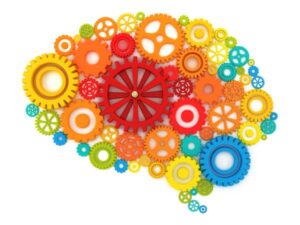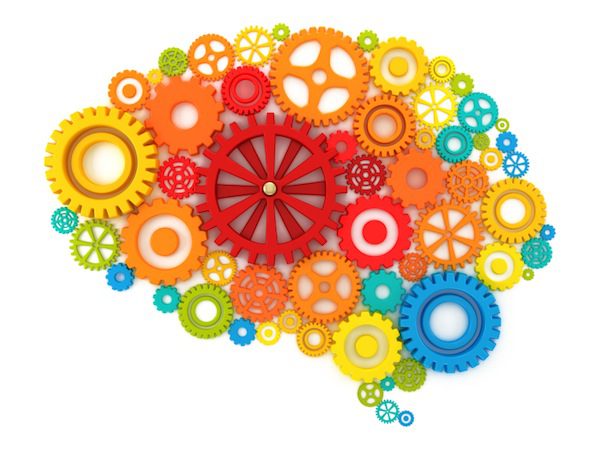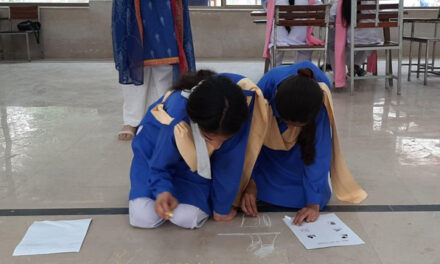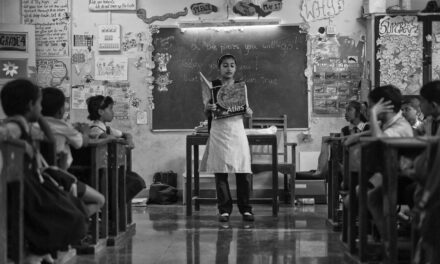 How does our education influence our daily lives? And how can the Sustainable Development Goals (SDGs) lead to efficient decisions in our lives? Some decisions can lead to prosperity and others to disaster. It is therefore important to delve into that phantom unit in our brains which delivers decisions within a few seconds and understand how education affects it. Let’s take an example:
How does our education influence our daily lives? And how can the Sustainable Development Goals (SDGs) lead to efficient decisions in our lives? Some decisions can lead to prosperity and others to disaster. It is therefore important to delve into that phantom unit in our brains which delivers decisions within a few seconds and understand how education affects it. Let’s take an example:
You and a colleague are looking at a large century-old country house that is up for sale. It’s listed for only £499,000. You instantly guesstimate likely mortgage payments for the next 20 years, and roughly compare them to your monthly salary. And repairs? Hmm, maybe that’s another £50,000. In less than a minute you realise that unless you get it for £300,000, you should pass it up. Your colleague has very different thoughts. The house exudes charm and prestige. It will cost something to fix up, but colors may be combined very creatively. Now what was the price again? Maybe the owner will accept £450,000…
How education influences our working memory
Working memory is part of the memory architecture that includes implicit and explicit memory. It contains the thoughts that are in your mind right now. But its capacity is minuscule: it holds 4-7 items for maybe 12 seconds. Then the data vanish, leaving behind some remnants to be used for the next round. This fast-fading time-space gives us just seconds in which to comprehend, calculate and decide. Working memory has serial effects, so the data that rush in first get priority in thinking. And if some items take too long or too much effort to retrieve, they will not get used. The result is striking differences in the data people use to make decisions about something, even if they have the same information.
How does education influence the difference? Let’s say you went to a grammar school, where you had to solve hundreds of tedious math problems. Your parents insisted on homework, and somehow you got through. Every calculation made you execute ever-longer chains, automatically, and these entered working memory as a single item. You could then hold enough data into working memory to solve problems like house mortgages. Magnitude relations and number operations may effortlessly rush into your thinking space and produce life-altering decisions. By contrast, your friend went to a less selective, maybe ‘alternative’ school, which emphasized group projects and pursuit of personal interests. Perhaps parents were poorly educated or too busy, or just trusted the system. Your friend studied art and fashion design for about as many hours as you spent in boring calculations. These oft-practiced skills, therefore, may rush into working memory for purchase decisions.
Thus, schooling influences the contents of our working memory for our entire lives. Automatised skills like spelling, clear writing, and effortless mental math were inculcated by teachers willing to give drill and demand homework that sometimes seemed pointless. The students who were trained well on these basics are privileged for life. The privilege extends to interests, which reflect topics we can instantly understand and thus feel encouraged to continue. People typically ignore the primacy of the ‘low-level’ skills and expect schools to teach creativity and critical thinking. But these are possible only when lots of prerequisite data arrive instantly into our fast-fading working memory. Invisible units like working memory are gate-keepers to complex cognition.
What education do we need for optimal decisions?
This raises the controversy of ‘traditional’ vs. ‘modern’ education. Our brains evolved to solve the problems of 400,000 years ago, and we must trick this arcane machinery into solving modern problems. Our neurons can perform calculation feats only if we practice them extensively to compile ever-longer chains of information and actions. Instant and unconscious execution requires memorisation and repetition. The rules are in our DNA.
Teachers of earlier centuries figured out some basics and created ‘traditional’ methods. Without an understanding of memory, today they seem passé. You don’t need facts, some people say; you can look them up on the internet. To the contrary, we need instant retrieval more than ever. The technical environment of the 21st Century requires increasingly complex stacking of automatised mental operations. We cannot escape the ‘traditional’ components.
The importance of well-practiced retrieval becomes evident during testing. It is not enough to ‘know’ something; the data must also be retrieved in seconds. If we recall an answer one hour later, we failed the test. Tests are often vilified, but in this respect they imitate life. Events also require instant retrieval. To spend our money wisely, we must calculate unit prices quickly, not three hours after leaving a store.
SDGs and the contents of our memory
Essential mental operations are highly relevant to the SDGs. The organisers of Target 4 are searching for indicators that compare all countries, in multiple languages and scripts. Cognitive science offers certain straightforward implications. Despite individual differences, we process information similarly across countries and cultures. This is why it is possible to assemble international teams, whose members communicate using the same data and timeframes. SDG indicators therefore should involve processing speed and accuracy. Metrics already exist for fluency in reading, math, writing, some vocational skills, and they could be developed further.
In conclusion, we can only think using the data our memory dredges up in milliseconds. Education must train our brains so that we have ready the information relevant to our adult well-being. To give equal opportunities, schools should teach basic skills to automaticity. Advanced learning is built on them. Children have the right to a working memory that retrieves accurately and instantly the facts needed for correct decisions in their environment.
But mental effort may be unpleasant; drill may seem irrelevant to children and tiring to teachers. Schools in poorer areas may offer less challenging programmes in order to reduce tensions and dropout. Pleasant school activities are certainly important. But ‘modern’ education may doom the weakest to a life of cognitive disadvantage and career limitations.
Real innovations in education should focus on how to move the ancient thinking machinery. Governments and schools must figure out creatively how to make practice more palatable. And the scholars who advise them must become well-versed in applied memory research.
But educators may find some aspects controversial. Implicit memory operations are largely unconscious, so common sense leads us astray. Speed seems like a narrow, simplistic, totalitarian concept. By contrast culture, motivation, emotions, social interactions, or trauma seem much more important for learning. These certainly matter. However, they are like transport or supermarket proximity for house-buying decisions. First and foremost, the price must be affordable. To get it right, the right facts must somehow win the race into the buyer’s working memory.
So how to make essential memory functions better understood and more palatable to educators? How to teach them in universities when the professors themselves do not know them? Finally, how to overcome philosophical objections? Your thoughts would be appreciated.
Helen Abadzi
Helen Abadzi is a researcher at the University of Texas at Arlington. To improve the outcomes of education investments she regularly monitors research in cognitive psychology and neuroscience. Her publications can be found at: uta.academia.edu/HelenAbadzi.
For more detailed explanations on popularised memory functions see Dr. Abadzi’s blogs on the NORRAG site, notably https://norrag.wordpress.com/2017/01/17/for-global-learning-metrics-ask-cognitive-scientists/






This article presents a great “back to basics” approach to learning. We complicate language learning much more than required with complex books with fine print and little spacing in between words. As the article suggested “traditional” ways of learning with a lot of practice and moving from small bits to chunks will help memory to process faster. The article present cognitive neuroscience principles and links it to 21st century learning needs.
I totally agree with your sentiments Radhika. It should be made simpler
The idea of the linkages between working memory automaticity and improvement of foundational skills, is key in addressing the learning deficiencies especially in early schooling of children with weak home support and poor early childhood education. This is confirmed in the field, through the analysis of many Early Grade Reading Assessments (EGRA).. H. Abadzi, with intellectual clarity and audacity, helps educators to re-discover the idea that “complex thinking is possible only when lots of prerequisite knowledge arrives instantly in the working memory”. This is a great service to the SDG’s learning agenda.
Great effort you people are doing. Its commendable
A very educative article there. good work. keep it up
Thanks for Articles.